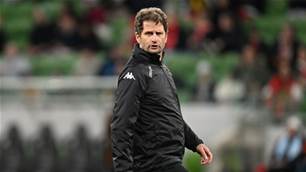Football Victoria believes the first stage of their Home of the Matildas could be complete before Australia and New Zealand potentially host the Women's World Cup in 2023.
“We want to use it as a centre of excellence for women’s football in Asia as well. That is one of the things we’re working on in the background to get a lot more international usage out of the facility – especially given the emergence of women’s football.
"If we have such a landmark asset, a world-class facility here in Victoria, I see a lot of use for it for teams and other nations to come here for their camps.”
A potential home of the Matildas, however, is just one of several facilities projects set to be pursued in Victoria in coming months.
According to FV’s 2019 Annual Report, footballing projects throughout the state had secured $240m in funding in 2019, including $130m for female-friendly change-rooms, buildings and ground improvements and for business cases and facilities planning and another $94m for the projects aimed towards securing the organisation’s target of a further 420 full-size equivalent pitches by 2027.
Boosting these plans was the announcement of $2.7b stimulus plan to boost the Victorian economy in the wake of COVID-19 by the State Government in May, which earmarked $60m in funding for new sporting facilities.
Lakeside Stadium – home of NPL Victoria side South Melbourne and occasional base of Melbourne Victory’s W-League and Y-League teams – has already been announced as one of the beneficiaries of the project.
Funding of between $1m and $10m will be available for shovel-ready projects as part of the stimulus spending, which Filopoulos says can be added to the existing World Game Facilities Fund to help shrink the facilities gap which exists in the state.
“We have about $13m worth of applications in for the World Game Facilities Fund,” Filopoulos explained.
“Year one of that fund is only $4m, and we’re looking for ways to try and get all $13m funded through this process. Hopefully this infrastructure fund can help fund all those world game funding applications for this year.
“In the last two years at Football Victoria, we’ve really driven this agenda around the facilities gap. You can see what we’ve achieved in two years and I don’t think we’ve scratched the surface.
“I think we can nationalise this story as one national narrative. My findings, in approaching this, is that it hasn’t been because of a lack of interest from the government to support us: it’s because football has in the past failed to tell its story well.
“[FV] developed a data-driven narrative and a data-driven strategy that clearly demonstrated a facilities gap based on our growth. We grew 24% in 2018, another 29% in 2019 and we were able to demonstrate through data that between 10,000-15,000 boys and girls a year miss out on playing at clubland because clubs can’t accommodate them – there are not enough facilities.”
Related Articles

'Timing not right': Montemurro's verdict on Matildas vacancy

Matildas: 'Fourth at the Olympics is honestly the worst place you could come'
.jpg&h=172&w=306&c=1&s=1)












